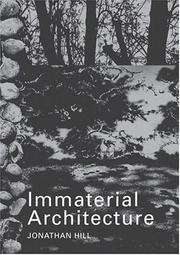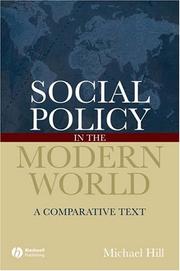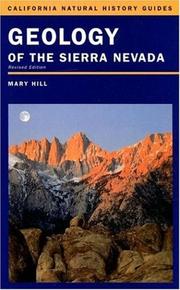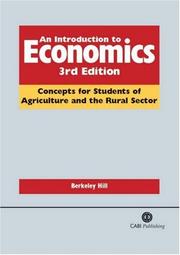| Listing 1 - 10 of 128 | << page >> |
Sort by
|

ISBN: 1402038895 9781402038891 9786610634569 1280634561 1402038909 Year: 2006 Volume: 191 Publisher: Dordrecht: Springer,
Abstract | Keywords | Export | Availability | Bookmark
 Loading...
Loading...Choose an application
- Reference Manager
- EndNote
- RefWorks (Direct export to RefWorks)
Adam Ferguson (1723-1816) was a major figure of the Scottish Enlightenment whose thought was, in many respects, original and distinctive. This book is a study of his ideas and of the intellectual forces that shaped them. Though somewhat overlooked in the nineteenth century, Ferguson was rescued from obscurity in the first half of the twentieth century by scholars interested in the origins of sociology and early critiques of modernity. Ferguson’s interest in the mechanics of social life and especially social change led him to many groundbreaking insights. In fact, he is sometimes identified as the 'Father of Modern Sociology'. In addition to exploring whether or not he merits this title, this study examines the whole of Ferguson’s thought as a system and includes his moral and faculty psychology, historiography, theology, politics and social science. Ferguson is distinguished by his deep appreciation of the complexity of the human condition; his study of society is based on the belief that it is not only reason, but the unseen, unplanned, sub-rational and visceral forces that keep the human universe in motion. Ferguson’s appreciation of this fact, and his ability to make social science of it, is his major achievement.
Philosophy, Scottish --- Philosophie écossaise --- Ferguson, Adam, --- Sociology --- Philosophy. --- Criticism and interpretation --- Economics. --- History. --- Political science. --- Sociology. --- Philosophy --- Social Change --- Sociology & Social History --- Philosophy & Religion --- Social Sciences --- Social sciences. --- Political sociology. --- Enlightenment --- Scotland --- Intellectual life --- Philosophie écossaise --- EPUB-LIV-FT LIVSOCIA SPRINGER-B --- Mass political behavior --- Political behavior --- Political science --- Behavioral sciences --- Human sciences --- Sciences, Social --- Social science --- Social studies --- Sociological aspects --- Gentleman in the country, --- Political philosophy. --- Economic history. --- Social Sciences. --- Sociological Theory. --- Sociology, general. --- History, general. --- Political Philosophy. --- Methodology/History of Economic Thought. --- Political Science. --- Criticism and interpretation. --- Civilization --- History of Economic Thought/Methodology. --- Administration --- Civil government --- Commonwealth, The --- Government --- Political theory --- Political thought --- Politics --- Science, Political --- Social sciences --- State, The --- Economic conditions --- History, Economic --- Economics --- Political philosophy --- Annals --- Auxiliary sciences of history --- Social theory --- Sociology - Philosophy. --- Ferguson, Adam, - 1723-1816 - Criticism and interpretation --- Political science—Philosophy. --- Economics—History. --- History of Economic Thought and Methodology. --- Sciences sociales --- Sociologie politique --- Philosophie des lumieres --- Ecosse (grande-bretagne) --- 18e siecle --- Vie intellectuelle --- Ferguson, Adam, - 1723-1816

ISBN: 0415363233 9780415363235 0415363241 9780415363242 0203013611 9780203013618 9781134228263 9781134228300 9781134228317 Year: 2006 Publisher: Oxon Routledge
Abstract | Keywords | Export | Availability | Bookmark
 Loading...
Loading...Choose an application
- Reference Manager
- EndNote
- RefWorks (Direct export to RefWorks)
This fascinating argument from Jonathan Hill presents the case for the significance and importance of the immaterial in architecture.Architecture is generally perceived as the solid, physical matter that it unarguably creates, but what of the spaces it creates? This issue drives Hill's explorative look at the immaterial aspects of architecture. The book discusses the pressures on architecture and the architectural profession to be respectively solid matter and solid practice and considers concepts that align architecture with the immaterial, such as the superiority of ideas over matter, command of drawing and design of spaces and surfaces.Focusing on immaterial architecture as the perceived absence of matter, Hill devises new means to explore the creativity of both the user and the architect, advocating an architecture that fuses the immaterial and the material and considers its consequences, challenging preconceptions about architecture, its practice, purpose, matter and use.This is a useful and innovative read that encourages architects and students to think beyond established theory and practice.
Architecture --- Immaterialism (Philosophy) --- Building materials. --- 72.01 --- Architectuurtheorie ; materialisme ; inmaterialisme --- Bouwmaterialen ; niet-tastbare elementen --- Architectural materials --- Building --- Building supplies --- Buildings --- Construction materials --- Structural materials --- Materials --- Immateriality (Philosophy) --- Concepts --- Idea (Philosophy) --- Idealism --- Philosophy --- Spiritualism (Philosophy) --- Substance (Philosophy) --- Universals (Philosophy) --- Philosophy. --- Architectuur ; theorie, filosofie, esthetica --- Immaterialism (Philosophy). --- Building materials --- architectuurfilosofie

ISBN: 1405127244 9781405127240 1405127236 9781405127233 Year: 2006 Publisher: Malden Cambridge university press
Abstract | Keywords | Export | Availability | Bookmark
 Loading...
Loading...Choose an application
- Reference Manager
- EndNote
- RefWorks (Direct export to RefWorks)
#SBIB:316.8H00 --- Sociaal beleid: algemeen --- Public welfare --- Social planning --- Social policy --- Social security --- Insurance, Social --- Insurance, State and compulsory --- Social insurance --- Insurance --- Income maintenance programs --- Social development planning --- Planning

ISBN: 0807863602 9780807863602 9780807857021 9780807828472 0807828475 0807857025 9798890872098 Year: 2006 Publisher: Chapel Hill : ©2006 University of North Carolina Press,
Abstract | Keywords | Export | Availability | Bookmark
 Loading...
Loading...Choose an application
- Reference Manager
- EndNote
- RefWorks (Direct export to RefWorks)
In 1964 a small group of African American men in Jonesboro, Louisiana, defied the nonviolence policy of the mainstream civil rights movement and formed an armed self-defense organization--the Deacons for Defense and Justice--to protect movement workers from vigilante and police violence. With their largest and most famous chapter at the center of a bloody campaign in the Ku Klux Klan stronghold of Bogalusa, Louisiana, the Deacons became a popular symbol of the growing frustration with Martin Luther King Jr.'s nonviolent strategy and a rallying point for a militant working-class movement in the South.Lance Hill offers the first detailed history of the Deacons for Defense and Justice, who grew to several hundred members and twenty-one chapters in the Deep South and led some of the most successful local campaigns in the civil rights movement. In his analysis of this important yet long-overlooked organization, Hill challenges what he calls'the myth of nonviolence--the idea that a united civil rights movement achieved its goals through nonviolent direct action led by middle-class and religious leaders. In contrast, Hill constructs a compelling historical narrative of a working-class armed self-defense movement that defied the entrenched nonviolent leadership and played a crucial role in compelling the federal government to neutralize the Klan and uphold civil rights and liberties.
African American civil rights workers --- Self-defense --- Political violence --- African Americans --- Civil rights movements --- Afro-Americans --- Black Americans --- Colored people (United States) --- Negroes --- Africans --- Ethnology --- Blacks --- Violence --- Political crimes and offenses --- Terrorism --- Hand-to-hand fighting --- Martial arts --- Afro-American civil rights workers --- Civil rights workers, African American --- Civil rights workers --- History --- Political aspects --- Civil rights --- Black people --- Deacons for Defense and Justice --- Ku Klux Klan (1915- ) --- History. --- Southern States --- Louisiana --- Mississippi --- Race relations. --- Knights of the Ku Klux Klan (1915- ) --- K.K.K. (Ku Klux Klan (1915- )) --- KKK (Ku Klux Klan (1915- )) --- K.K.K.K. (Knights of the Ku Klux Klan (1915- )) --- KKKK (Knights of the Ku Klux Klan (1915- )) --- National Knights of the Ku Klux Klan Association of America --- National Knights of the K.K.K. --- Invisible Empire --- Ku Klux Klan (19th century) --- J & D Club --- Jonesboro Legal and Defense Association --- Justice and Defense Club --- Louisiana (Province) --- Louisiana (Territory) --- Louisiane --- État de Louisiane --- Léta de la Lwizyàn --- Lwizyàn --- State of Louisiana --- US-LA --- La. --- Louisianne --- Territory of Louisiana --- District of Louisiana --- Luisiana --- West Florida --- Territory of Orleans

ISBN: 9780520936942 9786612762833 0520936949 0520236955 9780520236950 0520236963 9780520236967 1282762834 9781282762831 Year: 2006 Publisher: Berkeley : University of California Press,
Abstract | Keywords | Export | Availability | Bookmark
 Loading...
Loading...Choose an application
- Reference Manager
- EndNote
- RefWorks (Direct export to RefWorks)
Writing with verve and clarity, Mary Hill tells the story of the magnificent Sierra Nevada-the longest, highest, and most spectacular mountain range in the contiguous United States. Hill takes us from the time before the land which would be California even existed, through the days of roaring volcanoes, violent earthquakes, and chilling ice sheets, to the more recent history of the Sierra's early explorers and the generations of adventuresome souls who followed. The author introduces the rocks of the Sierra Nevada, which tell the mountains' tale, and explains how nature's forces, such as volcanic eruptions, earthquakes, faulting, erosion, and glaciation formed the range's world-renowned scenery and mineral wealth, including gold. For thirty years, the first edition of Geology of the Sierra Nevada has been the definitive guide to the Sierra Nevada's geological history for nature lovers, travelers, hikers, campers, and armchair explorers. This new edition offers new chapters and sidebars and incorporates the concept of plate tectonics throughout the text. * Written in easy-to-understand language for a wide audience. * Gives detailed information on where to view outstanding Sierra Nevada geology in some of the world's most beloved natural treasures and national parks, including Yosemite. * Provides specific information on places to see glaciers and glacial deposits, caves, and exhibits of gold mines and mining equipment, many from Gold Rush times. * Superbly illustrated with 117 new color illustrations, 16 halftones, 39 line illustrations, and 12 maps, and also features an easy-to-use, interactive key for identifying rocks and a glossary of geological terms.
Geology --- Geognosy --- Geoscience --- Earth sciences --- Natural history --- Sierra Nevada (Calif. and Nev.) --- Sierra Nevada Mountains (Calif. and Nev.) --- Sierra Nevada Range (Calif. and Nev.) --- Sierras (Calif. and Nev.) --- Geology -- Sierra Nevada (Calif. and Nev.). --- Sierra Nevada (Calif. and Nev.). --- california. --- campers. --- earth sciences. --- earthquakes. --- easy to read. --- erosion. --- field guide. --- geologists. --- geology textbooks. --- glaciation. --- gold rush. --- gold. --- hikers. --- illustrated. --- maps. --- mineral deposits. --- mountain range. --- national parks. --- natural forces. --- natural history. --- natural sciences. --- natural world. --- nature lovers. --- nonfiction. --- plate tectonics. --- regional geology. --- regional history. --- rock science. --- scientists. --- sierra nevada. --- travel guide. --- travelers. --- united states. --- volcanic regions. --- yosemite.

ISBN: 1845931270 9781845931278 Year: 2006 Publisher: Cambridge: CAB international,
Abstract | Keywords | Export | Availability | Bookmark
 Loading...
Loading...Choose an application
- Reference Manager
- EndNote
- RefWorks (Direct export to RefWorks)

ISBN: 1844571343 Year: 2006 Publisher: London : British film institute,
Abstract | Keywords | Export | Availability | Bookmark
 Loading...
Loading...Choose an application
- Reference Manager
- EndNote
- RefWorks (Direct export to RefWorks)

ISBN: 1281369675 1349533904 1403972591 1403983046 9786611369675 Year: 2006 Publisher: New York Palgrave Macmillan
Abstract | Keywords | Export | Availability | Bookmark
 Loading...
Loading...Choose an application
- Reference Manager
- EndNote
- RefWorks (Direct export to RefWorks)
Book
ISBN: 075243604X 9780752436043 Year: 2006 Publisher: Stroud: Tempus,
Abstract | Keywords | Export | Availability | Bookmark
 Loading...
Loading...Choose an application
- Reference Manager
- EndNote
- RefWorks (Direct export to RefWorks)
Digital
ISBN: 9781402038907 Year: 2006 Publisher: Dordrecht Springer
Abstract | Keywords | Export | Availability | Bookmark
 Loading...
Loading...Choose an application
- Reference Manager
- EndNote
- RefWorks (Direct export to RefWorks)
Political philosophy. Social philosophy --- Sociology --- Politics --- Economics --- History --- politieke wetenschappen --- sociologie --- economie --- geschiedenis --- economische geschiedenis --- methodologieën
| Listing 1 - 10 of 128 | << page >> |
Sort by
|

 Search
Search Feedback
Feedback About UniCat
About UniCat  Help
Help News
News